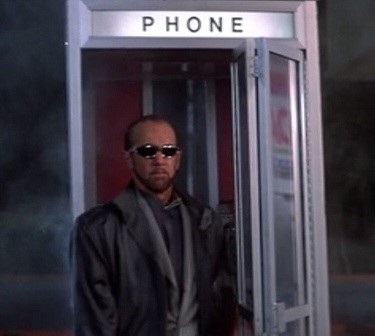
Do you know the difference between a P-Type and N-Type solar cell, duuuuuude?
When it comes to material for making solar cells, silicon is the most bodacious of all the elements. Its market share is an excellent circa 97%1. If you want solar PV, there is next to no choice other than silicon. However, there is more than one type of silicon cell, which is fortunate for people who enjoy faffing about when deciding what to buy.
Many people are aware silicon solar comes in a choice of two non-delicious flavours — monosilicon and polysilicon. Or monocrystalline silicon and polycrystalline silicon for people who totally have the time to pronounce the extra syllables. Monosilicon cells are more efficient, but polysilicon is cheaper. The battle between photonic and economic efficiency has roughly split world production between the two.
But there is another choice very few people are aware they are making, but it occurs when they select high end, high efficiency, solar panels that use N-type solar cells over panels that use the much more common, but lower efficiency, P-type solar cells.
If you are wondering what the differences between P-type and N-type solar cells are, that’s a really most excellent occurrence, because that’s what this article is all about.
P-Type And N-Type Cells — What The Hell Are They?
In some ways, solar cells are really simple. Light hits them, knocking electrons free from silicon atoms. The cell is made so electrons are often blocked from going back to the atoms they came from, so they instead travel through a fine grid of wires on the top of the cell to its back and while making that trip they can provide us with power.
This is known as a P-type solar cell because P stands for positive and the cell has a positive base that attracts the negatively charged electrons to it.
But what if I told you it was possible to make solar cells that were the exact opposite called N-type cells because the base was negative and the electrons traveled from the negative bottom to the positive top?
I expect your mind is now so blown it is on the other side of the room:
But that’s what N-type cells do. They are currently only used by some high end panel makers, but because they offer an efficiency advantage they are becoming more popular and may eventually replace the conventional P-type solar cells. This means solar cells will no longer have electrons squirted into their bottoms, which is a good thing because it will improve solar panel efficiency.
Before I go on to explain the advantages of N-type over P-type cells, some of you may be wondering why we named P-type cells after their positive base when it is purely arbitrary and we could have just as easily called them N-type cells after their negative tops. And I say we can’t do it that way because, um…well…
Okay, now my mind is blown.
Clearly, the only thing we can do now is travel back in time and beat up Benjamin Franklin for screwing up the whole positive/negative thing in the first place2.
Fortunately, I know a guy who can jump through time like a kangaroo. I call him3…
…Kanga-Rufus.
Some High End Panels Use N-Type Cells
While most solar panels are currently P-type cells, some high end solar panels use N-type cells to give them an edge in efficiency. SunPower does this and I have found out that LG Solar does this as well with their NeON2 R panels.
Now, this is where it gets tricky. I said that in P-type cells electrons flow through wires from the top to the bottom of the cell and N-type do it the other way. Well in these fancy, high end cells they put both negative and positive contacts on their bottom. These cells, which only allow current to go through their bottoms are called rear contact cells. In polite company, sometimes the term interdigitated back contact is used.
I’m sorry if this information is not mind blowing, but merely confusing:

“Whaaaa…”
But despite these cells having everything go through their bottom, they are still N-type cells. This is because while electrons both come out and go into their bottoms, it is still the top of the solar cell that is positively charged and the bottom that is negatively charged.
What makes the difference is common P-type cells have the very dull element boron added to them, while N-type cells get the much more exciting element Phosphorus.
B Is For Boron In P-Type While P Is For Phosphorus In N-Type
In chemistry, the element boron is represented by the letter B, while the element phosphorus is represented by the letter P. So you may think it doesn’t make sense that the cells to which we add B get called P-type while the cells we add P get called N-type.
And you’re right, it doesn’t make sense. But don’t worry, we’ll put this on the list of things to fix when we get a time machine. Admittedly, it will be way down on the list, but don’t worry, I promise I will get to it before checking out Cleopatra’s asp.

First off, snakes don’t breast feed. Secondly, that skinny little asp of yours isn’t going to knock anyone dead.
Boron Is The Dope, But Phosphorus Is The Best Dope
Normally impurities in silicon is a bad thing. But when to comes to making solar cells work, they have to add just a tiny amount of the right sort of impurity, in a greater concentration on one side then the other. This impurity is called a dope and adding it is called doping. It results in a difference in electrical charge between the top and bottom of the cell when light hits it.
The boron used in P-type cells works well enough, but has some disadvantages. For one thing it results in Light Induced Degradation or LID that reduces the efficiency of solar panels by around 1.5% percent4 after their first few days in the sun. This LID effect is not a rip-off. It is taken into account in the panels wattage. But it does hurt efficiency and is one reason why people sometimes get over optimistic about how much electricity their new solar systems will generate.
Phosphorus does not have this effect and so N-type cells can start with high efficiency and stay there.
Another advantage is that N-type cells are apparently affected less by some types of impurities. I don’t know how much of an advantage this is, but it certainly wouldn’t hurt.
If They Are Better Why Aren’t All Solar Cells N-Type?
The silicon ingots used to make both P-type and N-type cells are identical. So if the silicon is the same, you might be wondering why all solar cells aren’t N-type instead of the situation we currently have where most are P-type.
Well, we can blame people shooting stuff into space for some of it. A lot of early research into solar cells went into developing them for use in space, and trust me, this was a good thing. What NASA and other shooting stuff into space organizations found was that P-type cells functioned better when exposed to radiation in space and so more effort was put into developing them.
But the main reason why P-type cells dominated is money. Sure, space exploration and exploitation got people into the habit of making P-type cells, but that’s nothing compared to the power of money. P-type cells were simply cheaper to make and that’s why N-type cells are currently only used in high efficiency panels that people are willing to pay a premium for.
Despite the higher cost, N-type cells are expected to become increasingly common in the future. This is because, as people look for ways to improve the efficiency of solar panels, they are investigating ways of bringing down the cost of manufacturing N-type cells and the consensus seems to be it can be done.
Bringing down the cost of fancy engineering is something that has happened again and again through history and I fully expect history to repeat itself in this case. If it doesn’t, and highly efficient N-type cells don’t become more popular, well, that would be just… sad.
Footnotes
- Back in 1995, cadmium telluride thin film solar was 30% of the market, but apparently its makers didn’t get the message only the cells were supposed to be thin and not sales, margins, market share, and chances of staying in business. ↩
- Okay, so he didn’t really screw up, but haven’t you always wanted to travel back in time and beat up Benjamin Franklin anyway, at least once? Really, we owe it to history, because how do you know arse-kicking time travelers aren’t the reason why he changed from owning slaves to fighting slavery? ↩
- This footnote is to provide a pause in which I put on sunglasses. ↩
- A 1.5% decrease in efficiency will cause a 16.5% efficient panel to fall to an efficiency of around 16.25%. ↩





 RSS - Posts
RSS - Posts



Ronald, you can really write! You turned a boring subject into an enjoyable article I actually understood! Well done . . .
“Interdigitated back contact” sounds like priests with wandering hands
Hey Ronald, love your style man, unique. Unfortunately cannot use your quotes since I’m a bit far away but I wish we had something like this in Portugal. Say, completely off topic, is it true that tesla is now selling powerwall 2 in Australia?
http://insideevs.com/tesla-powerwall-2-installations-australia/
Afraid I cannot trust anyone but you when it comes to tesla. The hyperbole is strong with that one. you seem to be the only one in the entire world who is immune to it. Help me Obi-wan Ronald
Tesla has said they have installed Powerwall 2s here but the article you linked to is the first real information I’ve seen on an actual home installation. I will be very interested to see what people think of its actual price, appearance, and performance.
May the Force be with you.
Hi A major reason for me and others to invest in solar panels is to limit global warming – so – I find it curious that the majority of panels are chocolate brown, dark grey or black. Are there good quality, efficient panels which are lighter in colour? Lighter colours reflect more sunlight directly back to space – whereas dark roofs absorb more solar energy and the surplus is radiated back into the atmosphere to be absorbed by greenhouse gases – contributing again to global warming. I don’t want to cover my pale grey roof with dark panels- especially since the roof space is at the rear of the house and won’t be seen from the street.
Hi Beth.
It is possible to get panels in a range of different colours. I’ve seen them displayed, but I’m not sure it’s possible to buy them in Australia at this time. Unfortunately, they have two drawbacks. They generate around 15% less energy per square meter than normal solar panels and they are likely to be very expensive. But the good news is, solar panels don’t really contribute to the warming of the earth. Their overall effect is the opposite because they reduce fossil fuel generation that emists greenhouse gases and, unlike fossil fuel and nuclear power, they don’t generate heat in the process of generating electricity. But even ignoring these effects, on average, solar panels may result in cooling. This article goes into detail if you’re interested:
https://www.solarquotes.com.au/blog/solar-is-cool/
It took me to get to the bottom of the article and read the other comments to see that this article was published in 2017! Great read.
Since it is now 2023, has the penetration of N-type cells become more prevalent?
Jinko Solar is planning on shipping 90% N-type panels at the end of the year (info at the end of the article).
https://www.solarquotes.com.au/blog/jinkosolar-factory-fire-mb2910/